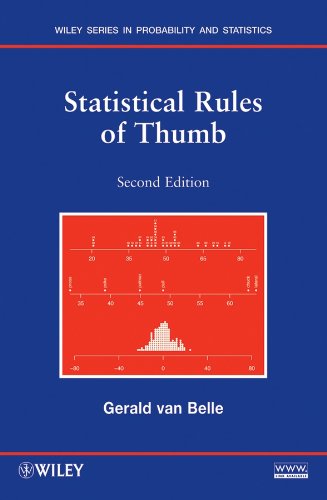Statistical rules of thumb ebook
Par hermanson jennifer le vendredi, juin 3 2016, 22:36 - Lien permanent
Statistical rules of thumb. Gerald van Belle

Statistical.rules.of.thumb.pdf
ISBN: 0470144483,9780470144480 | 305 pages | 8 Mb

Statistical rules of thumb Gerald van Belle
Publisher: Wiley
Here are some rules of thumb I've compiled for graduate students studying applied statistics: * Consider the underlying science. The numbers will follow but here are some takeaways (I didn't do any statistical analysis, this is just me eyeballing numbers and drawing conclusions that are probably not statistically significant): The rule of thumb is certainly good in terms of rules of thumb, I wouldn't follow it to the ends o f the Earth but it's definitely better than nothing. The rule of thumb: AIC preference/signficance levels. This would also ensure confidence in the calibration employing the metrological and statistical practices recommended. Some other small sample rules of thumb like the “flip flop” test and “shortfall less than 1” rule were also considered, but didn't seem to be given substantial weight. 6- Never let a day go by without studying the changes in the prices of all available trading instruments. The rule of thumb: AIC and BIC preference/signficance levels. The interesting scientific questions are not always questions statistics can answer. The marketer does a statistical test of significance and gets a p-value of 0.04 (remember your business stats class here…). None of the three seem to follow the rule with any sort of consistency but they are all in the ballpark of the rule, but not by much. 7- The greatest inferential mistake: "This event never happens in my market. My fascination with his ideas led me to DerivativesStrategy.com which published Mr. Than rules of thumb to weigh essentially unquantifiable risks for political purposes. Taleb's rules of thumb on trader risk management, which I have quoted in full below. If you're of a rigorous turn of mind, you can get a pretty good handle on risks in repetitive situations that are susceptible to statistical analysis. Version B Source: Statistical Rules of Thumb by Gerald van Belle; http://vanbelle.org/. You will build an instinctive inference that is more powerful than conventional statistics.